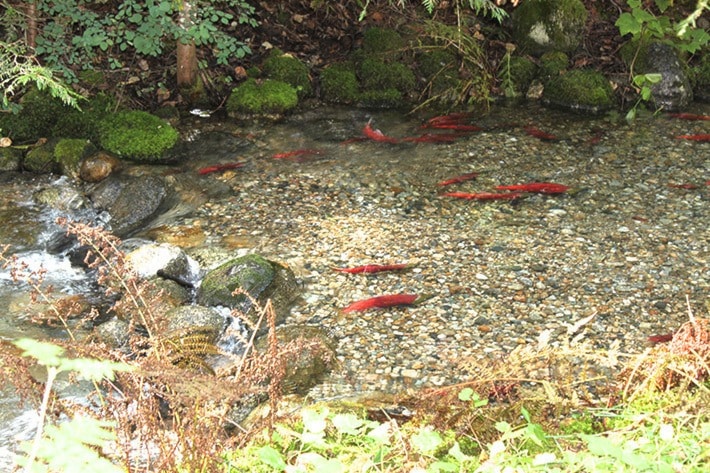Recent changes to fishery regulations in Kootenay Lake are a result of public activism, says Kerry Reed, a Kootenay Lake fishing guide.
“Public pressure has got the ministry acting on this,” he says.
He’s talking about the collapse in the numbers of kokanee in Kootenay Lake over the last couple of years, and the pressure that has been put on the government by groups like the BC Wildlife Federation, which sounded the alarm last winter with a letter to the minister of environment demanding urgent action. The West Arm Outdoors Club called it the worst fisheries crisis on Kootenay Lake in over 70 years.
As a testament to the level of public alarm about the fishery, 300 people turned up to a public meeting in February in Balfour, and 200 to another in May. The meetings were hosted by the Balfour Business and Historical Association. Government fish biologists attended, made presentations, and answered questions.
The subject of discussion was the out-of-balance predator-prey relationships in the lake. Gerrard and bull trout numbers have increased rapidly in recent years and by 2012 showed unprecedented numbers. There were so many that they depleted the stocks of kokanee, their main food source. As a result, kokanee numbers have dropped drastically in the last couple of years, so trout have less to eat and are therefore fewer and smaller.
(This dynamic exists in the main lake but not in the west arm which has separate population dynamics and is not in trouble.)
The Gerrard trout fishery is an important part of the economy of Kootenay Lake communities.
In April, the province responded to public pressure by reducing the catch limit on kokanee to zero, and increasing the limit on Gerrard trout to 4, in an attempt to balance things out by decreasing predator numbers and giving the prey a chance.
This part of the plan, according to some attendees at the meeting, made sense to everyone.
“They are following through with what they said (in February),” Reed says. “They are being held accountable.”
Another part of the province’s solution is to introduce hatchery-raised kokanee fry to the lake from outside sources if the numbers are still down in September.
There was some disagreement at the May meeting about where those fry should be introduced. Local resident Harvey Andrusak, a retired regional fisheries biologist and retired director of fisheries for the province as well as being a member of the BC Wildlife Federation, thinks all of the fry should all be introduced to the Meadow Creek spawning channel because of its proven effectiveness.
“We know that at Meadow Creek the survival rate is 50 per cent, egg to fry,” he says. “In the south arm it is two to five per cent.”
Andrusak said the province wants to introduce some of the fry into other creeks in the south arm of the lake. No one from the ministry was available to comment on this.
Another action contemplated by the ministry is to extend further into the fall the period of nutrient restoration in the lake. This is a program first started in 1992 in which nitrogen and phosphorus are added to the lake each year to compensate for nutrients lost as a result of dams on the system.
